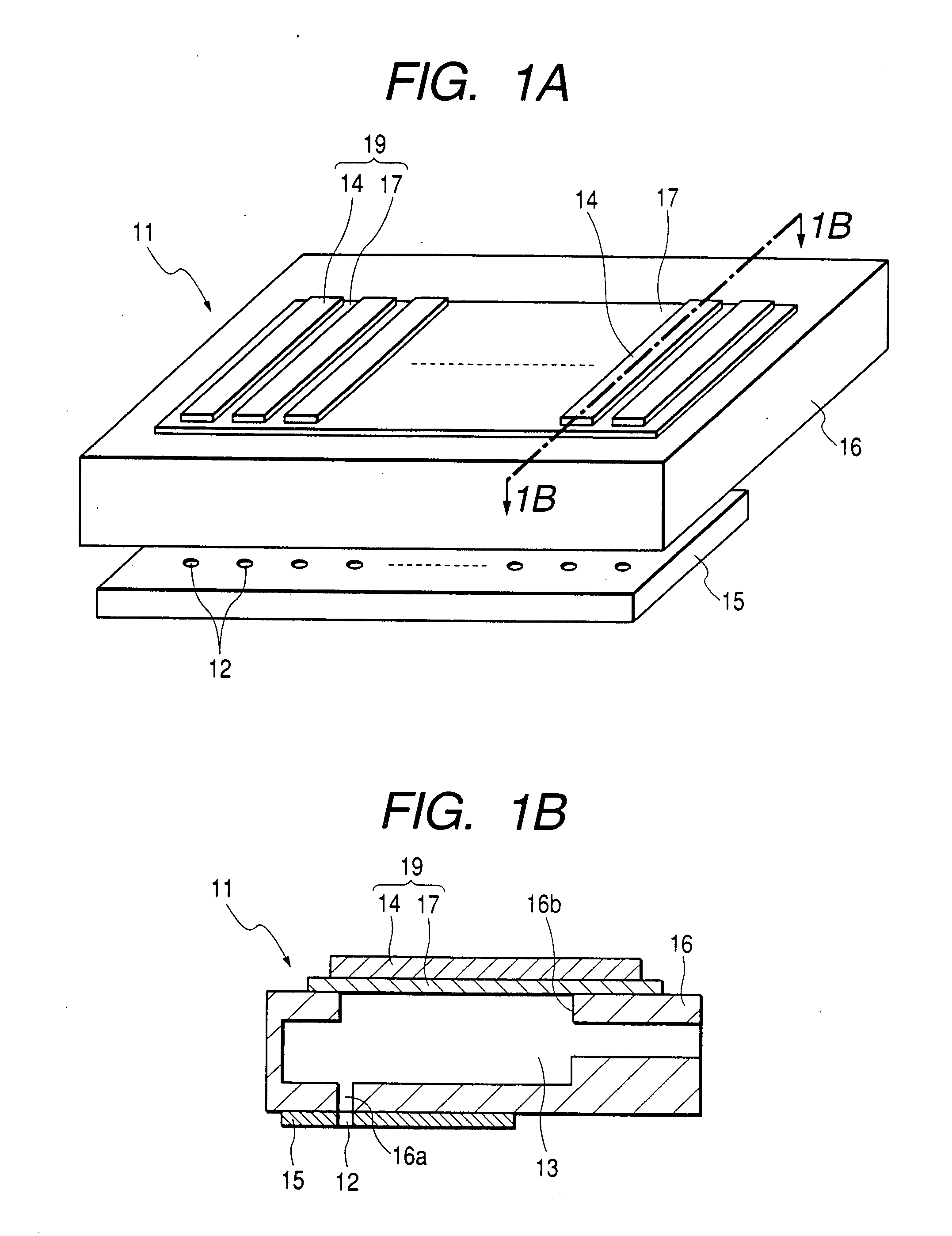Now, obviously, the composition of the BaTiO.sub.3 makes it difficult to obtain single crystal directly from the BaTiO.sub.3 solution when BaTiO.sub.3 series single crystal is manufactured.
Also, for the TSSG method, not only an expensive
noble metal crucible, such as a
platinum crucible, is needed, but the growing speed is slow to make the manufacturing costs extremely high.
With these methods, however, the mono-crystalline growth rate greatly varies to make it impossible to grow any bulky single crystal with good reproducibility.
Also, the rearrangement density is high, and the
crystallinity of the BaTiO.sub.3 series single crystal thus obtained is inferior to the one obtained by the conventional TSSG method and the
flux method.
This method makes the manufacturing apparatus and process complicated, because there is a need for a process to melt the crystal
oxide.
Also, the single crystal thus obtained has inferior
crystallization properties, and only the crystal that has a
high ratio of pore content is obtainable eventually.
However, this method is not fully satisfactory in terms of the time required for manufacturing and costs.
This material aims at obtaining a high photo-refractivity in the near
infrared range, but Mg, Fe, or some other element, which may exert unfavorable influence on the piezoelectric property, is contained in that material.
As a result, it is not preferable to use this as a piezoelectric material.
Also, for the utilization at the industrial level, it is not satisfactory in terms of the time required for manufacture and costs.
As described above, the TSSG or
flux method for manufacturing BaTiO.sub.3 series single crystal makes it extremely difficult to improve problems related to
manufacturing efficiency, such as the time required for manufacturing and costs, among some others.
Here, although the
sintering method is anticipated to enhance the
manufacturing efficiency, the variation of growing speed of BaTiO.sub.3 series single crystal makes it impossible to obtain any satisfactory result, and also, the
crystallinity of the BaTiO.sub.3 series single crystal thus obtained is inferior to the one obtainable by means of TSSG or
flux method.
In other words, it has been difficult to implement the manufacture of BaTiO.sub.3 series single crystal having excellent
crystallinity and property in a shorter period of time at lower costs.
Any element that uses the BaTiO.sub.3 series single crystal has a narrow
usable temperature range due to low T.sub.c as practical drawbacks.
Therefore, the piezoelectric property is not satisfactory.
Also, the piezoelectric property of the BaTiO.sub.3--PbTiO.sub.3 polycrystal is far inferior in terms of a piezoelectric material to that of the PZT polycrystal or the BaTiO.sub.3--PbTiO.sub.3 series single crystal, and there is no way fundamentally to enhance the piezoelectric property as single crystal.
Also, for the TSSG method, an expensive noble
crucible, such a
platinum crucible, is needed.
In addition, the growing speed is only 0.1 to 0.2 mm / h approximately, leading to an extremely high cost of manufacture.
Further, the material loss is great, and there is a drawback that it is difficult to obtain bulky crystal.
Such an extremely high cost of manufacture is inevitable to make the field of utilization thereof extremely limited.
It has been pointed out that this is valueless as a material of industrial use.
There are often the cases where the anticipated performance cannot be demonstrated after all.
It is also anticipated that there is the same problem regarding the BaTiO.sub.3--PbTiO.sub.3 series single crystal if it should be manufactured using the melt-solidification method.
In order to suppress the Pb
evaporation, it is imperative that a pressurized container be utilized, presenting a
disadvantage that the manufacturing costs become higher.
In order to suppress the Pb
evaporation, it is imperative that a pressurized container be utilized, presenting a
disadvantage that the manufacturing costs become higher.
In order to suppress the lead
evaporation, it is imperative that a pressurized container be used, which leads to such an unfavorable problem of increased cost of manufacture.
In order to suppress the lead evaporation, there are often the cases where only the execution of the heating process under the lead
atmosphere as described earlier is not good enough.
As compared with the precess under the normal pressure, this is unfavorable in terms of the productivity and costs.
In this respect, if the ratio of pore content of the sintered member exceed 5 volume %, the ratio of pore content in the single crystal obtained by the
crystal growth is also increased, which unfavorably lowers the
mechanical strength thereof.
However, there is no practical problem since most of the components move to a distal end of the grown crystal.
Also, if the value is approximately less than 0.1 volume %, this method is not good enough in terms of precision.
The sintered member thus obtained is composed of minute crystal grain of average granular
diameter of approximately 3 .mu.m, thus making it impossible to obtain the single crystal in a size sufficient enough to be used as
seed crystal.
 Login to View More
Login to View More 


